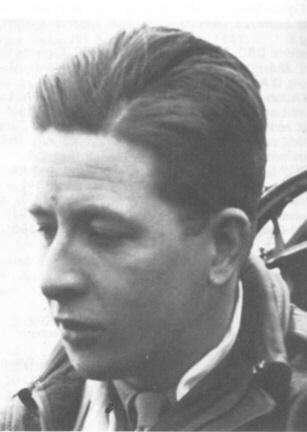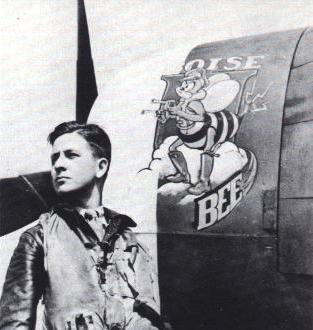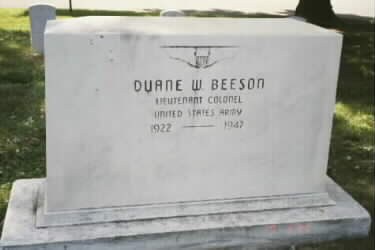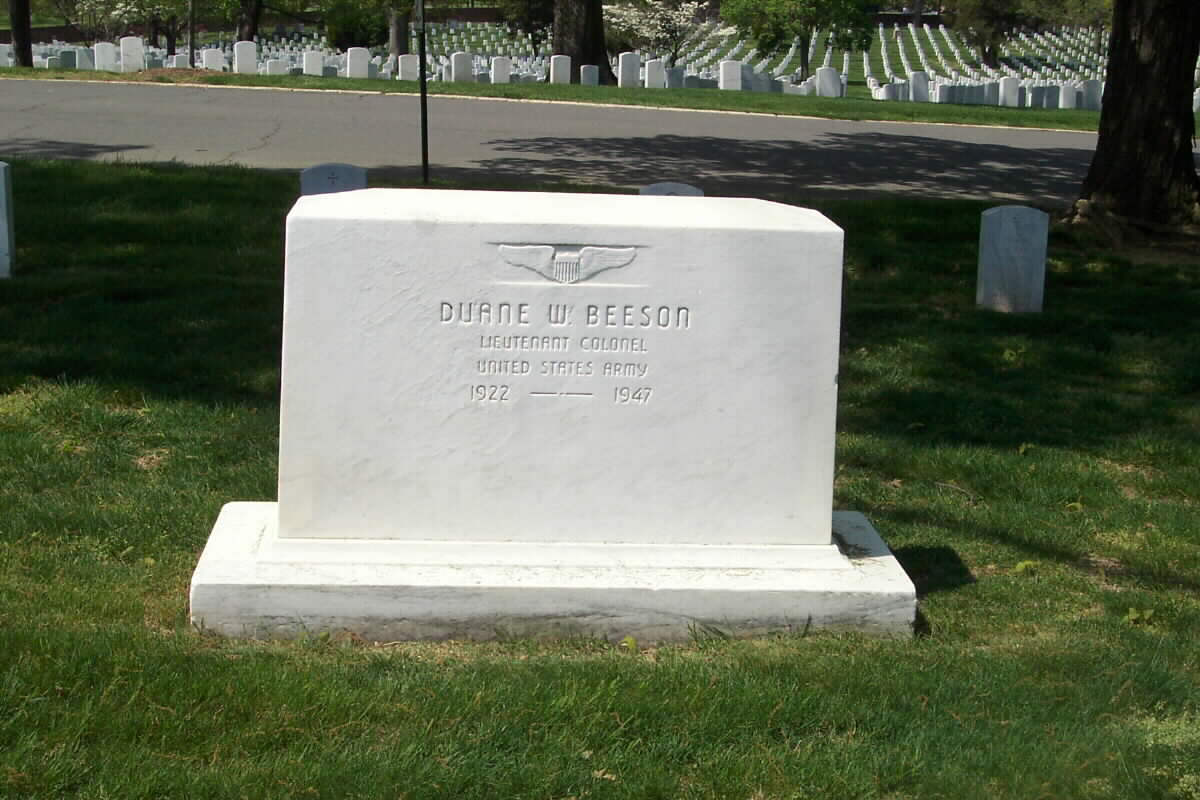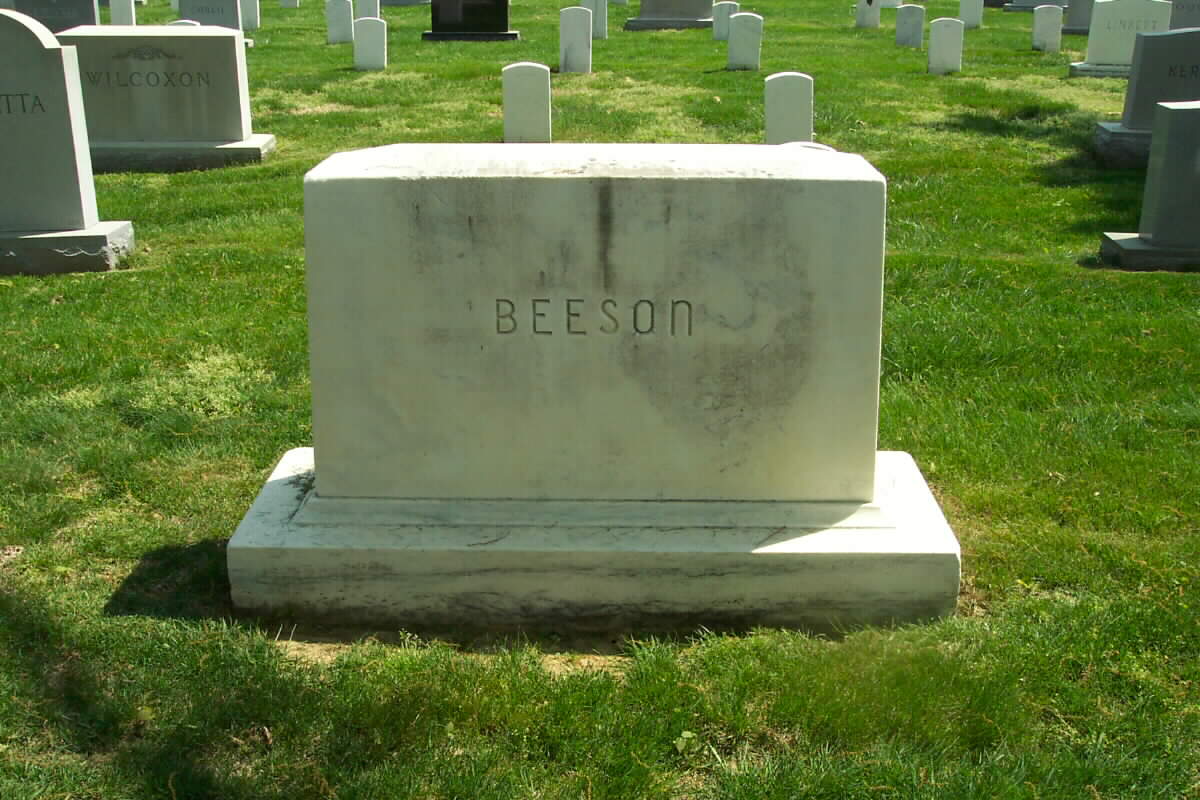Duane W. Beeson was born to Idaho early pioneers, Carl and Zelda Parsons Beeson. In November 1993 the city of Boise honored her native son by naming the Duane W. Beeson Air Terminal building after Idaho’s top WW II Ace.
In the terse, impersonal language of the U. S. Air Force, the following records the facts of Duane’s life when his name, among others, was being considered in the possible renaming of the Mountain Home Air Base:
“Fighter Pilot. Born July 16, 1921 in Boise, Ada Coounty, Idaho. Graduated from Boise High School in 1939.
Enlisted in Royal Canadian Air Force in 1941, transferred to the Royal Air Force as a member of the American Eagle Squadron in England in April 1942. Had over 300 flying hours when he transferred to American Air Force in September 1942. Belonged to Fourth Fighter Group, Eighth Air Force. Flew Hurricanes, Spitfires, Thunderbolts and Mustangs. He called his plane the “BOISE BEE”.
Was credited officially with shooting 25 planes, was second ranking ace at time of being shot down over Germany April 5, 1944, after 150 missions. Was imprisoned in Stalag No. 1 prison camp at Barth, Germany for 13 months, liberated by Russians at end of war, April 19, 1945.
Returned to U.S., took course in jet aircraft at Williams Field Arizona, later stationed at Greenville, South Carolina. Died February 13, 1947 while on his way to Walter Reed Hospital at Washington D.C. for operation for brain tumor.
Buried in Arlington National Cemetery. Had the rank of Lieutenant Colonel at the time of death and belonged to the John Regan Post of American Legion, Boise, Idaho.
Medals: Distinguished Service Cross
Distinguished Flying Cross with silver oak leaf cluster (5th)
Silver Star
Air Medal with five oak leaf clusters
Purple Heart
Croix de Guerre from Belgium”
The American Legion Post who made the recommendation for submitting Lieutenant Colonel. Duane Willard Beeson’s name for consideration in the Memorialization Program for redesignation of the Mountain Home Air Force Base, Idaho, made these additional remarks:
Duane was not just lucky. Not only was he brave and courageous but by his devotion to duty and his untiring efforts he became unusually skillful and efficient in the handling of his plane.
One letter from a comrade tells how Duane rigged up an outfit in which he spent many hours at practice. He built an electric device which indicated hits by flashing a light. Another officer tells how Duane built an attachment with which he was able to use his feet to assist him in aiming.
But the fact sheet fails to convey the emotions with which each such experience is clothed – the whole gamut of emotions must have been experienced by Duane in vivid color. The exhilaration of being “tops” in his profession, the uncertainties, the fears, the sorrow over comrades missing in action, the frustration of being a prisoner, the pride of relatives and friends and then their grief at his untimely death.
Duane was ill only a short time with the tumor and died as the plane was landing at Washington D.C. He was buried with full military honors in Arlington Cemetery.
On January 25, 1946 he was married to Tracy Waters of Baltimore, Maryland. It was his intention to remain in the Air Force as he had been awarded a permanent commission as Lieutenant Colonel.
BEESON, DUANE W WHITE
LT COLONEL AIR CORPS USA
- VETERAN SERVICE DATES: Unknown
- DATE OF BIRTH: 07/16/1922
- DATE OF DEATH: 02/13/1947
- DATE OF INTERMENT: 02/19/1947
- BURIED AT: SECTION 11 SITE 34
ARLINGTON NATIONAL CEMETERY
Michael Robert Patterson was born in Arlington and is the son of a former officer of the US Army. So it was no wonder that sooner or later his interests drew him to American history and especially to American military history. Many of his articles can be found on renowned portals like the New York Times, Washingtonpost or Wikipedia.
Reviewed by: Michael Howard

